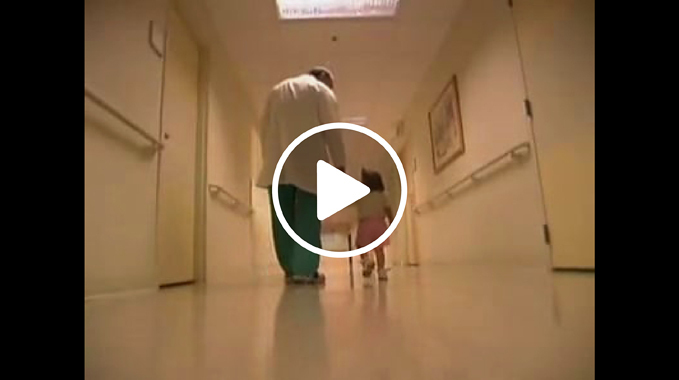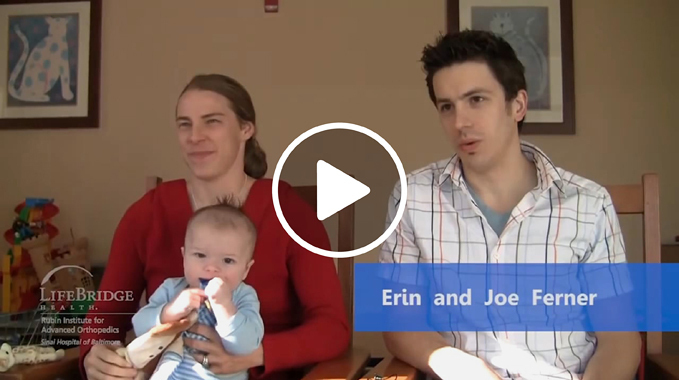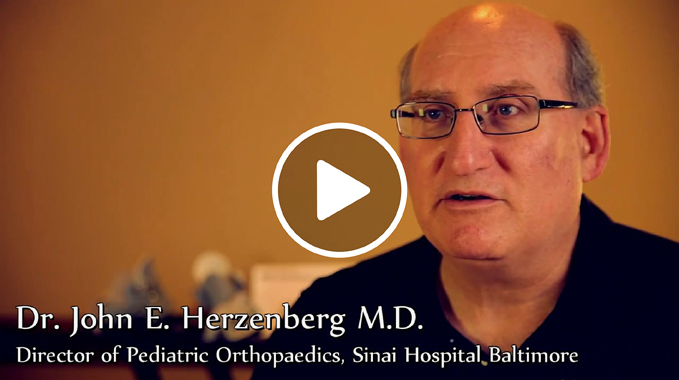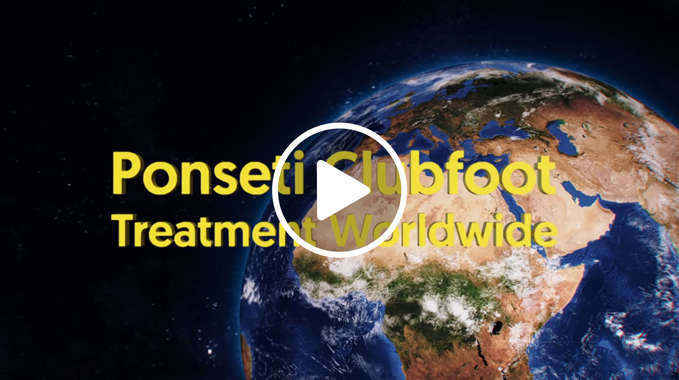Clubfoot
What is clubfoot?
Idiopathic clubfoot is a foot condition that typically affects otherwise healthy babies. Idiopathic means “cause unknown.” In a club foot, the entire foot is twisted “down and in,” to the point that it looks like the feet are upside down, with the soles pointed upward. In most cases, there is no known cause of idiopathic clubfoot deformity. However, some babies with clubfoot also have other serious associated syndromes, such as arthrogryposis, or spina bifida, or constriction band syndrome. In general, the “idiopathic” clubfeet are easier to treat than the “syndromic” clubfeet.
Clubfoot is one of the most common non-major birth defects. It affects approximately one in every 1,000 newborns. Every year in the United States alone, it is estimated that as many as 8,000 babies are born with the condition. Both feet will be affected in half of these children. Boys are more frequently affected than girls.
During infancy, clubfoot does not cause pain. In fact, a child who does not receive treatment will begin to stand and even walk at normal developmental stages. However, the child will walk on the outside border of the foot, or even on the top of the foot. Children who are not treated will eventually have severe functional disability. They will not be able to wear shoes, and the foot will eventually become painful, prohibiting participation in most sports and even certain forms of employment.
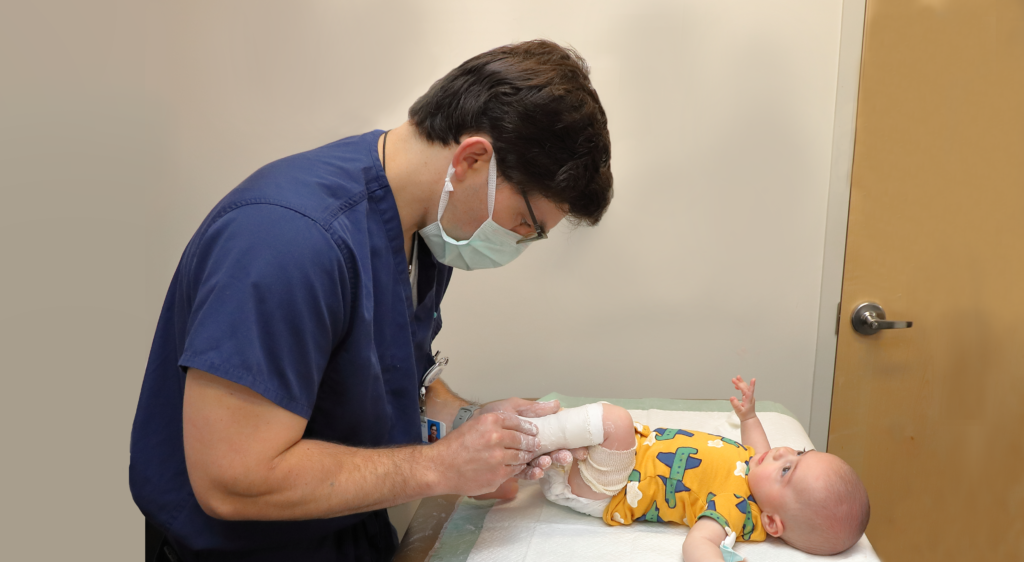
How do we treat clubfoot?
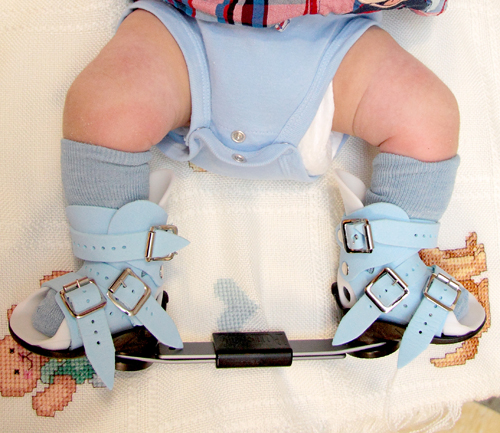 Example of a child in the Bracing Phase
Example of a child in the Bracing PhaseTraditionally, clubfoot had been treated with extensive open surgery. However, over the past 20 years, the Ponseti “conservative” method has become favored. Dr. John Herzenberg, the founder of our clubfoot clinic, is one of the world’s leading experts on the Ponseti method for clubfoot treatment, and one of the first pediatric orthopedists outside of Ponseti’s home state of Iowa to start using Dr. Ponseti’s method. He extensively trained and mentored Dr. Philip McClure who now also specializes in using the Ponseti method, a mostly non-surgical treatment for correcting clubfoot. The Ponseti method involves three phases:
- Cast Phase: Casts are applied weekly for 4 to 8 weeks
- Tenotomy Phase: This minor procedure to cut the Achilles tendon is performed in the clinic under local anesthesia.
- Bracing Phase: The child wears special shoes that are connected by a bar (Boots and Bar)
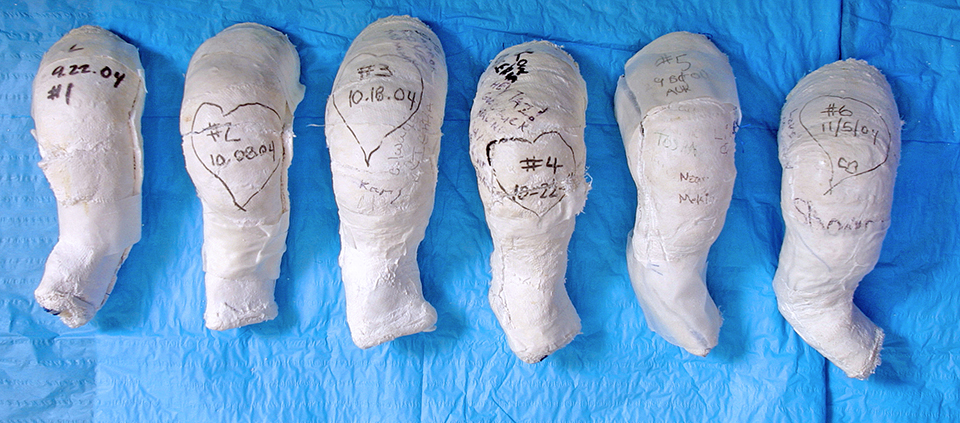 Copyright © 2005 by Media LLC, 600 Community Drive, Manhasset, NY, 11030, USA; Reprinted from BioMechanics with permission. Lamm BM, Herzenberg JE. Ponseti method revolutionizes clubfoot treatment. Biomechanics 12(10):47–58, 2005.
Copyright © 2005 by Media LLC, 600 Community Drive, Manhasset, NY, 11030, USA; Reprinted from BioMechanics with permission. Lamm BM, Herzenberg JE. Ponseti method revolutionizes clubfoot treatment. Biomechanics 12(10):47–58, 2005.Our brochures (Information for Parents, Boots and Bar Stage, and Exercises for Your Child) contain complete information about each stage of treatment. This video may also help you understand the treatment process:
How long does it take to correct clubfoot with the Ponseti method?
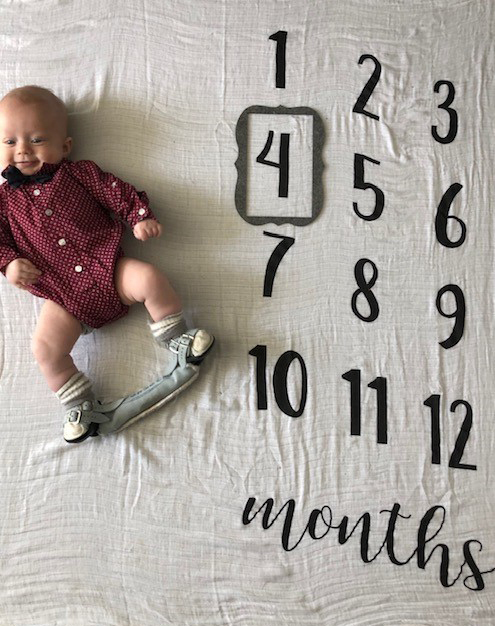 If a child starts treatment within a few weeks of birth, he or she will be completely done with treatment by 4-5 years of age. The initial casting phase takes approximately 3 months. Then the boots and bar are applied. The child wears them day and night for three months (from age 3 months to age 6 months). From age 6 months to when the child turns four or five years old, the child wears the boots and bar at nighttime only. For more information, please see our brochures (Information for Parents, Boots and Bar Stage, and Exercises for Your Child).
If a child starts treatment within a few weeks of birth, he or she will be completely done with treatment by 4-5 years of age. The initial casting phase takes approximately 3 months. Then the boots and bar are applied. The child wears them day and night for three months (from age 3 months to age 6 months). From age 6 months to when the child turns four or five years old, the child wears the boots and bar at nighttime only. For more information, please see our brochures (Information for Parents, Boots and Bar Stage, and Exercises for Your Child).
Does the Ponseti method involve any surgery?
After the initial casting phase, most children with clubfoot undergo a minor office procedure in which the Achilles tendon is cut (tenotomy). This is done with local anesthesia. Parents are allowed to be present, to comfort the baby. When children are 2.5 years old or older, about 15% of the children may require an additional surgical procedure to help balance the strength of the foot muscles. This procedure is called an anterior tibialis tendon transfer.
Can clubfoot be treated with only surgery?
For decades, the long-standing medical solution had been extensive surgery (also called posteromedial release). Extensive surgery can cause scarring, weakness and stiffness. It also costs approximately four times more than the Ponseti method. Dr. Herzenberg made it his personal mission to reverse the long-standing practice of routine extensive surgery to treat clubfoot. Dr. Herzenberg decided to incorporate the Ponseti method into his practice in 1998. He went from performing surgery on 95% of his patients with clubfoot (prior to 1998) to performing surgery on only 5% of his patients (since 1998). Dr. McClure joined our clubfoot clinic in 2019 and continues our commitment to treating patients with the Ponseti method.
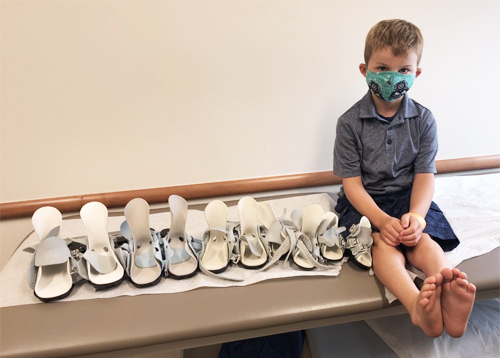
If my child has clubfoot, how soon after birth should I bring my child in for an appointment?
It is not necessary to come to our Clubfoot Clinic immediately after being discharged from the hospital. Ideally, it is recommended that parents bring their child to our clinic one to two weeks after birth. However, we have successfully treated many children who come to us at age 3-8 months, after having unsuccessful treatment elsewhere.
I am an expectant mother and the ultrasound indicated a possible foot deformity. Can I schedule an appointment before my child is born?
Yes, Dr. McClure can meet with you to discuss options and explain the treatment.
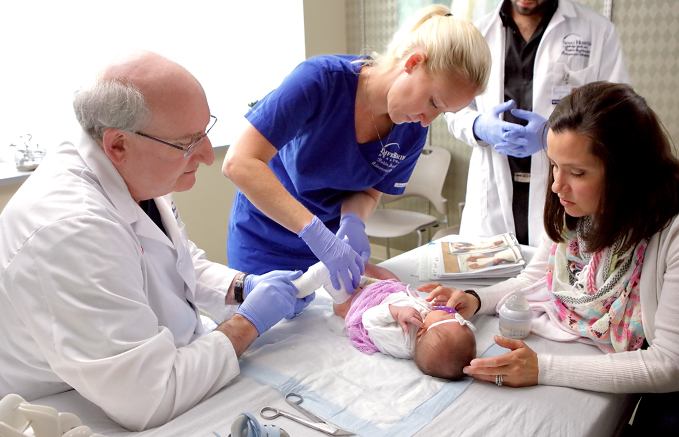
Can the Ponseti method be effective in treating older infants who have a clubfoot deformity?
Yes, research has shown that the rate of success in older infants was similar to the rate of success in younger infants. That has been our experience in our Clubfoot Clinic as well.
Can any doctor claim to use Ponseti’s method and how is a parent to know who is legitimate?
Anyone can theoretically make the claim that he or she is performing the Ponseti method. Our doctors have encountered many cases in which parents were told they were receiving the Ponseti method, but in fact, the treating physician was making significant deviations from the strict Ponseti method. These deviations usually result in less than satisfactory results. The Ponseti technique is characterized by long leg casts reapplied weekly. Parents should see positive change in the foot after just 3 or 4 casts are applied.
What is an atypical clubfoot?
Up to ten percent of children with idiopathic congenital clubfoot will have a special variation called “atypical clubfoot.” There is no way to detect this at birth. However, after about four or five casts, a crease appears in the outer border of the foot. This is the telltale sign of an atypical foot. When we see this, we have to modify the type of manipulations that we do. All children with atypical clubfoot will need a tenotomy. During the bracing phase of treatment, the brace is set at 40 degrees external rotation instead of the usual 70 degrees.
There is yet another variant of atypical clubfeet that is seen after mishaps with casting: casts repeatedly slipping, and the foot becoming swollen, hot, and “angry.” Such feet need a break from casting, and then once settled down (after one to two weeks), the casting process may be restarted. The prognosis for atypical feet is overall good. However, we have found that the need for secondary surgery, (such as anterior tibialis tendon transfer or repeat Achilles tenotomy), is somewhat higher in atypical clubfeet.
What research has been done on the Ponseti Method, and what do the results indicate?
Dr. Ponseti published his results many times, and his partner, Dr. Frederick Dietz has published Ponseti’s results with 30 years of follow-up. This is one of the best long-term outcome studies in the entire orthopedic literature. They found that 30 years after being treated, patients were functioning as well as patients who did not have clubfoot.
Dr. Herzenberg published a study in which he evaluated how children were doing 5 to 9 years after he treated them with the Ponseti method. He found that it was effective in correcting the deformity and that parents were very satisfied with the results. Dr. Herzenberg also compared club feet treated with extensive surgery to those treated with the Ponseti method by analyzing their X-rays and walk (gait). In this study, Dr. Herzenberg and the co-authors found that the Ponseti method resulted in a superior outcome when compared with extensive surgery. Dr. Herzenberg’s research findings regarding the success of the Ponseti method have been published in the Journal of Pediatric Orthopaedics, Clinical Orthopaedics and Related Research, Journal of Children’s Orthopaedics and in Orthopedics Today. He has presented his clubfoot research at scientific meetings and as a visiting professor at numerous hospitals around the world. Dr. Herzenberg is regularly on the faculty of Ponseti method courses in the USA and abroad.
How many infants have been treated with the Ponseti method in your Clubfoot Clinics?
Our Clubfoot Clinic has treated more than 500 babies with the Ponseti method since 1998.
How did Dr. Herzenberg learn about the Ponseti method?
Early in his medical career, Dr. Herzenberg remembers the frustration he felt as a pediatric orthopedic surgeon when dealing with clubfoot cases. During his training, he had been taught that extensive surgery was the only treatment that could correct this deformity. But he personally saw that the results of this treatment were often not very good. The operation was extremely invasive, and often the deformity would recur, leading to significant foot problems that frequently required even more surgery. He yearned to find a better way.
In 1997, Dr. Herzenberg found a book, “Congenital Clubfoot, Fundamentals of Treatment,” written by pediatric orthopedic surgeon, Ignacio Ponseti, MD, from Iowa City. Though Dr. Ponseti had developed and proven his method to be successful over 30 years ago, this book was not published until 1996. Dr. Herzenberg spoke with colleagues who worked with Dr. Ponseti at the University of Iowa and was impressed by the fact that clubfoot in Iowa rarely required extensive surgery. He decided to learn and practice the Ponseti method and kept in close contact with Dr. Ponseti and his team in Iowa for advice. In 1998, Dr. Herzenberg invited Dr. Ponseti to Baltimore, Maryland, to review the first group of babies treated under his care. Dr. Ponseti confirmed Dr. Herzenberg’s success and declared that this was the first time someone not directly trained by Dr. Ponseti had used his technique as it was meant to be done.
Dr. Herzenberg is now widely recognized as a champion of the Ponseti method, one of a select few doctors who are responsible for reviving and popularizing this method of treating clubfoot over the last few decades. Dr. Herzenberg has taught hundreds of doctors all around the world how to use the casting method and avoid extensive surgery to correct clubfoot. He personally mentored Dr. McClure in the use of the Ponseti method, and they practiced together for nearly five years before Dr. Herzenberg’s retirement from providing patient care.
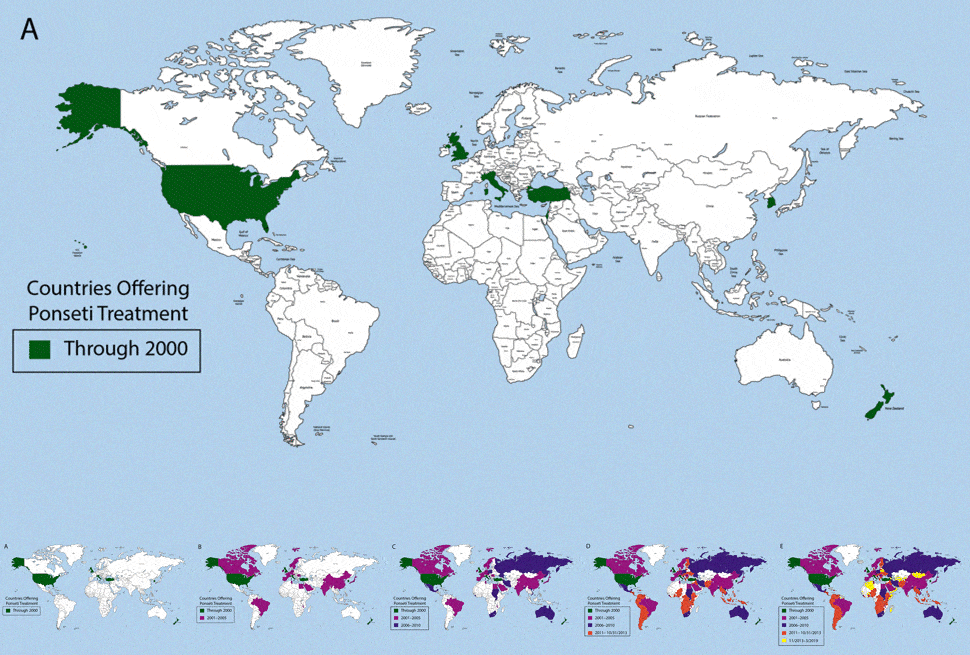
Why choose the International Center for Limb Lengthening for treatment of clubfoot?
Dr. Herzenberg is one of the world’s leading experts on the Ponseti method, a conservative, mostly non-surgical clubfoot treatment. He extensively trained and mentored Dr. McClure who has been on our Clubfoot Clinic team since he joined the International Center for Limb Lengthening practice in 2019. Our patients benefit from our team-centered approach with world-renowned doctors and specialized physician assistants. We help patients with clubfoot achieve their best possible result.
Examples of Treatment
Case 1
Case 2
Handouts and Information
- International Center for Limb Lengthening Brochures
- Research articles that Dr. Herzenberg has written about the Ponseti method
- “The Ponseti Method for Clubfoot: Correction Information for Parents”
This short guide for parents is provided by the Global HELP organization. - NPR article featuring the Ponseti method and Dr. Herzenberg
- “Clubfoot: Ponseti Management”
This free book is intended for medical professionals and focuses on providing information about all aspects of managing clubfoot using the Ponseti method. Dr. Herzenberg contributed to this book to assist the Global HELP organization in providing health education using low-cost publication.
Podcast
“A Clubfoot Mom” podcast host Maureen Hoff interviews Dr. Herzenberg about his experience learning, adopting and teaching the Ponseti method of treating clubfoot with casting rather than invasive surgery in an episode titled, “Dr. John Herzenberg: A True Ponseti Champion.”
Videos
- “Interview with Dr. Herzenberg”
Dr. Herzenberg talks about how he learned about the Ponseti method and how it has changed the lives of his patients in this MD Orthopaedics video.
- “How Does the Ponseti Method Work?”
Scientific Animations Without Borders (SAWBO) consulted with Dr. Herzenberg when they were creating this video.
- “Ponseti Clubfoot Treatment Worldwide”
Dr. Herzenberg is one of many experts from around the world interviewed in this feature-length documentary by Director Lane Wyrick.
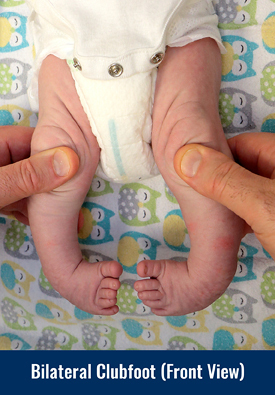
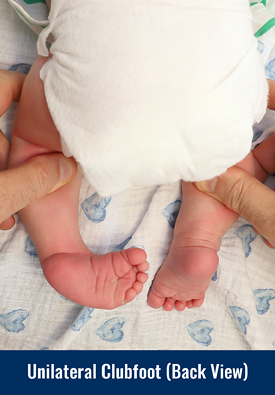
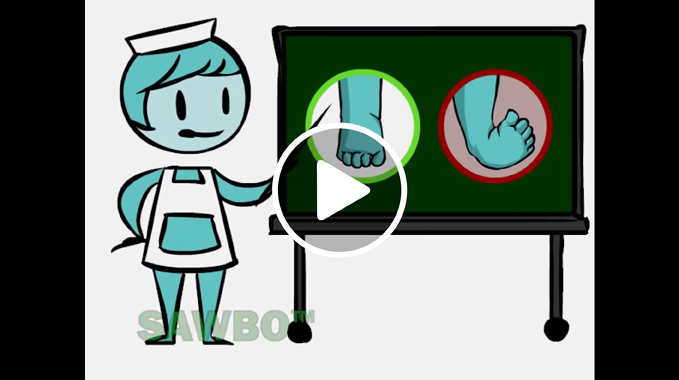
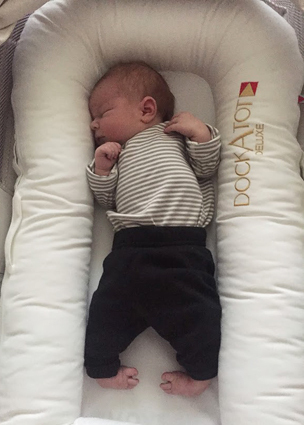
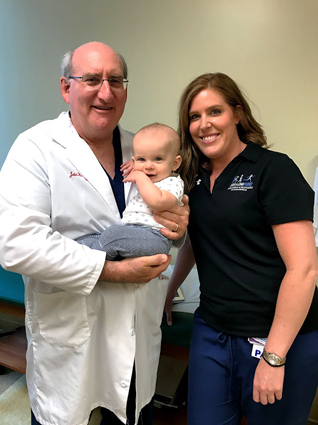
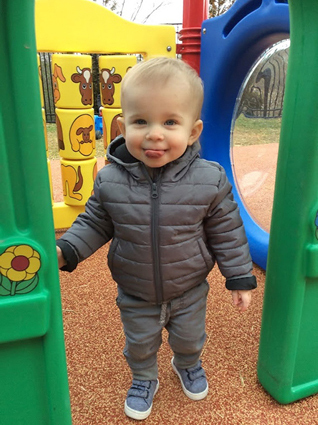
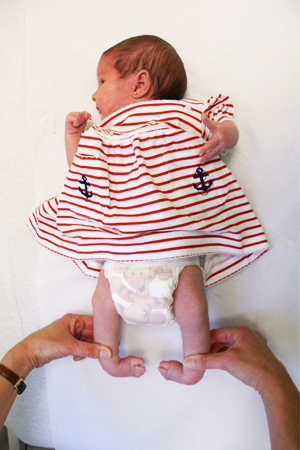
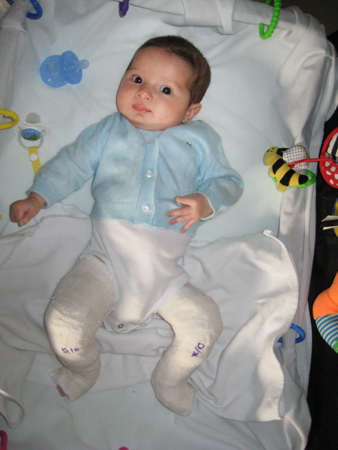
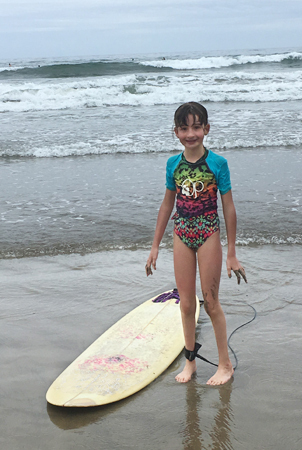
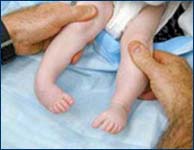 3-month-old baby who underwent clubfoot casting at another hospital. The treating physician recommended extensive surgery to correct this severe clubfoot deformity.
3-month-old baby who underwent clubfoot casting at another hospital. The treating physician recommended extensive surgery to correct this severe clubfoot deformity.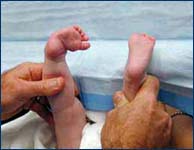 The family heard about the Ponseti method through the internet and came to see ICLL physicians for another opinion.
The family heard about the Ponseti method through the internet and came to see ICLL physicians for another opinion.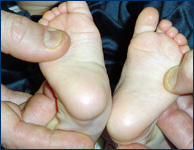 The same baby after undergoing Ponseti casting and tenotomy at our facility. The feet are now well corrected, and major open surgery was not needed.
The same baby after undergoing Ponseti casting and tenotomy at our facility. The feet are now well corrected, and major open surgery was not needed.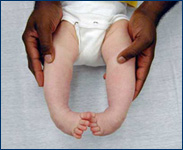 This 2-month-old baby had been treated with a series of casts at another hospital. Despite casting, the feet were still severely deformed (clubfoot). Surgery was recommended by the physician treating this baby. The family consulted Dr. Ponseti’s web site and found out about the availability of the Ponseti method at our Center.
This 2-month-old baby had been treated with a series of casts at another hospital. Despite casting, the feet were still severely deformed (clubfoot). Surgery was recommended by the physician treating this baby. The family consulted Dr. Ponseti’s web site and found out about the availability of the Ponseti method at our Center.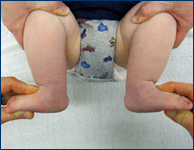 Same baby after undergoing Ponseti casting and tenotomy by ICLL staff.
Same baby after undergoing Ponseti casting and tenotomy by ICLL staff.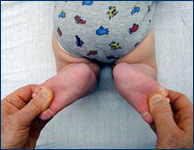 The feet are well corrected, and major surgery has been avoided.
The feet are well corrected, and major surgery has been avoided.